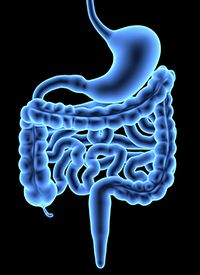Ramucirumab/Nivolumab Combination Active in Advanced Gastric Cancer
Based on findings from the phase I/II NivoRam study, investigators at the 2019 Gastrointestinal Cancers Symposium reported that the combination of nivolumab and ramucirumab is active in patients with previously treated advanced gastric adenocarcinoma.

Based on findings from the phase I/II NivoRam study, investigators at the 2019 Gastrointestinal Cancers Symposium reported that the combination of nivolumab (Opdivo) and ramucirumab (Cyramza) is active in patients with previously treated advanced gastric adenocarcinoma.
Patients with advanced gastric cancer are generally treated with a combination of a platinum and fluoropyrimidine, but after failure, treatment options are limited and survival is short.
The combination of nivolumab and ramucirumab resulted in a median progression-free survival (PFS) of 2.89 months and a 6-month PFS rate of 37.0%, which met the primary endpoint (an expected 6-month PFS rate of 36%),1said lead study author Hiroki Hara, MD. At the data cutoff on December 15, 2018, median overall survival (OS) was 17.05 months.
The median PFS of about 3 months observed in NivoRam [NCT02999295] is comparable to that with paclitaxel (Abraxane) and ramucirumab in the RAINBOW study, said Hara, director, Department of Gastroenterology, Saitama Cancer Center, Saitama, Japan.
RAINBOW was a randomized, placebo-controlled, double-blind, phase III international trial of 665 patients with advanced gastric or gastroesophageal junction adenocarcinoma whose disease had progressed on or within 4 months after first-line chemotherapy with platinum plus fluoropyrimidine with or without an anthracycline. Median OS was 9.6 months in the ramucirumab/paclitaxel arm versus 7.4 months in the placebo arm (HR, 0.807; 95% CI, 0.678-0.962;P= .017).2
However, 41% of patients in the active treatment arm in RAINBOW had grade 3 or higher neutropenia and 17% had grade 3 or higher leucopenia. In contrast, in NivoRam, “there were few grade 3/4 adverse events.” These included 2 patients with grade 3 hypertension, 2 with grade 3 diarrhea, and 1 with grade 3 proteinuria, Hara said. One patient had grade 4 small intestinal perforation. Other grade 3 treatment-related adverse events were upper gastrointestinal hemorrhage (n = 1), colitis (n = 1), autoimmune pancreatitis (n = 1), liver dysfunction (n = 1), cholangitis (n = 1), and hematoma (n = 1).
Ramucirumab targets vascular endothelial growth factor receptor-2 (VEGFR-2). In preclinical studies, blocking VEGFR-2 relieved T cell exhaustion, improved T cell infiltration into tumors, and inhibited migration of tumor-associated macrophages. The combination of simultaneous PD-1 and VEGFR-2 blockade is supported by data enhancement of T cell recruitment and activation of local immune status to induce synergistic antitumor effects.
Phase I of NivoRam assessed dose-limiting toxicities (DLTs) of the combination for the first 28 days of therapy in 6 patients. In phase II, 6-month PFS was determined with the addition of 40 patients, for a total of 46.
Eligible patients were those with unresectable advanced or recurrent histologically confirmed adenocarcinoma of the stomach or esophagogastric junction. All patients were refractory or intolerant to first-line platinum and fluoropyridine chemotherapy.
In phase I, patients were treated with ramucirumab, 8 mg/kg, every 2 weeks, and nivolumab, 3.0 mg/kg or 1.0 mg/kg (optional), every 2 weeks. No DLTs were encountered, so these dosages were advanced to phase II.
Median patient age was 66 years; 65.2% were male. Disease status was stage IV in 65.2% and recurrent in 34.8%. Histology was evenly divided among intestinal and diffuse disease. PD-L1 status was positive in 56.5%, negative in 34.8%, and unknown in 8.7%. Mismatch repair status was proficient in 84.8%, deficient in 2.2%, and unknown in 13.0%. Thirty patients (65.2%) had 2 or more metastatic sites.
At data cutoff, the median duration of therapy was 3.7 months, and treatment is ongoing in 3 (6.5%) of patients.
The median PFS was 2.3 months in the 26 patients with PD-L1 expression <1% by combined positive score compared with 4.4 months in the 16 with PD-L1 expression ≥1%. Six-month PFS was 34.2% in those with high PD-L1 expression versus 39.7% among those with low expression of PD-L1.
Twelve-month PFS in the overall population was 9.6%. When stratified by PD-L1 expression, 12-month PFS was 15.0% in those with high expression compared with 6.6% in those with low expression. Biomarker analyses are continuing, Hara said.
Six-month OS in the overall population was 86.4% (84.1% in the patients with high PD-L1 expression vs 88.2% in those with low PD-L1 expression). Twelve-month OS was 58.6% in the entire study cohort (59.0% in those with high PD-L1 expression vs 58.8% in those with low PD-L1 expression). Median OS did not differ by PD-L1 expression, at 17.1 months in each group.
The overall response rate (ORR) was 26.7% in the entire cohort; all 12 had a partial response (PR). Sixteen patients (35.6%) had stable disease (SD), for a disease control rate (DCR) of 62.2%.
There were 8 PRs and 7 with SD in the high PD-L1 expressers, for an ORR of 30.8% and a DCR of 57.7%. There were 2 PRs and 9 with SD in those with low PD-L1 expression, for an ORR of 12.5% and a DCR of 68.8%.
“We wanted to compare this regimen with paclitaxel and ramucirumab in a phase III trial,” Hara said. “However, in another study in Japan that is ongoing, nivolumab and ramucirumab plus paclitaxel will be assessed as secondary therapy compared with ramucirumab and paclitaxel. We expect to present those data this year at either ASCO or ESMO.”
References:
- Hara H, Shoji H, Takahari T, et al. Phase I/II study of ramucirumab plus nivolumab in patients in second line treatment for advanced gastric adenocarcinoma (NivoRam study).J Clin Oncol. 2019;37 (suppl; abstr 129).
- Wilke H, Muro K, Van Cutsem E, et al. Ramucirumab plus paclitaxel versus placebo plus paclitaxel in patients with previously treated advanced gastric or gastro-oesophageal junction adenocarcinoma (RAINBOW): a double-blind, randomised phase 3 trial.Lancet Oncol2014;15:1224-35.